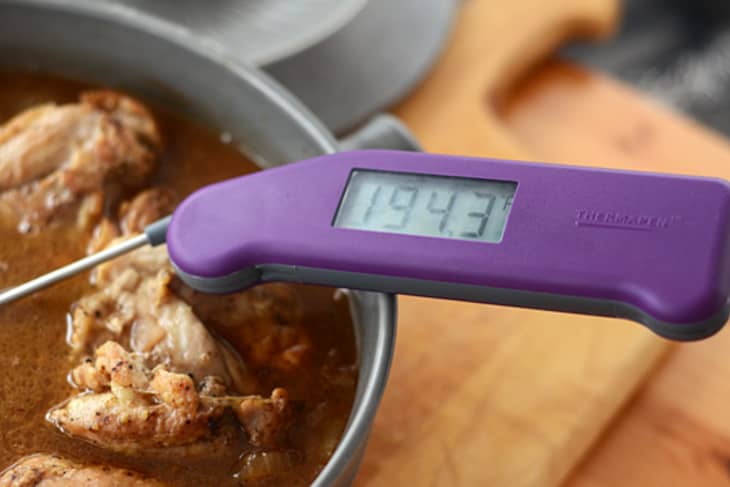On the Importance of Using Cooking Thermometers: And Our #1 Pick!
It might seem finicky, but in recipes calling for specific internal cooking temperatures — a roast, for example, or egg-based desserts like cheesecake — a thermometer can make all the difference between a perfectly done dish and one that’s overcooked. You may even find once you get in the hang of using a cooking thermometer, you’ll come to rely on it in recipes that don’t specifically call for it.
There are really four types of thermometers you can use in the kitchen: all-purpose, oven, meat, and candy. Here’s a quick breakdown.
All-Purpose Digital Thermometers: Yes, there are analog thermometers, but an instant-read digital thermometer is more convenient. Despite the name, it’s not really instant-read. The display usually takes anywhere from 20 to 30 seconds to give an accurate temperature reading, but it’s still quicker than analog. This is a basic all-purpose thermometer. You can use it for meat, baked goods, anything that requires an internal temperature reading. (If you use it for meat, just make sure to sanitize the thermometer to avoid cross-contamination.)
Oven Thermometer: An essential tool for many of us to help prevent hot spots and wonky temperatures from affecting our recipes. The Cooper-Atkins Oven Thermometer is recommended by Cook’s Illustrated, but we’ve also had positive experiences with the Sunbeam Oven Thermometer.
Meat Thermometer: A meat thermometer does exactly what you’d think; it’s specifically designed to measure the temperature of meat, so it ranges from 140° to 220° Fahrenheit. As mentioned above, if you have an instant-read thermometer and a meat cooking temperature guide nearby, you probably don’t need a separate meat thermometer, unless you just like seeing the meat labels and temps side-by-side. If you have a meat thermometer, here’s how to calibrate it.
Candy Thermometer: Digital instant-read temperature ranges aren’t usually high enough for tasks like boiling sugar or deep-frying, so that’s where a candy thermometer comes in handy. Candy thermometers range from 100° to 400° Fahrenheit, so they’re perfect for a range of recipe needs.
The Kitchn’s #1 Thermometer Pick: The Thermapen is a whopping $93, but this all-purpose (truly) instant-read thermometer is totally worth the splurge. Read why we love it here.
Readers, do you use a thermometer in the kitchen? What brands do you recommend?
It’s Reader Request Week at The Kitchn! This post was requested by J&H FROM BEYOND THE STOOP.
(Image: The Thermapen, via Faith Durand)
